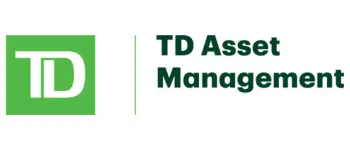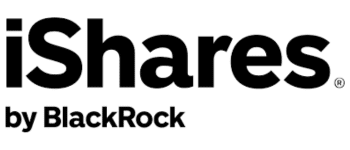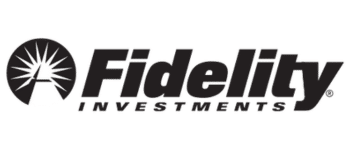Income on Autopilot? These Canadian Dividend ETFs Have It
Key takeaways
Strong Yield & Stability – Canadian dividend ETFs focus on financials, utilities, and energy, offering a balance of income and capital appreciation.
Varied Strategies – Some ETFs track high-yield indices, while others use active management or factor-based approaches to enhance returns.
Sector & Market Risks – Heavy exposure to banks and commodities means sensitivity to interest rates, economic cycles, and global demand fluctuations.
One ETF I like way better than the ones on this list.While broad market exposure offers benefits, it might not suit investors who seek income. Comprehensive index funds aren’t always the solution, nor is choosing individual stocks in retirement.
For this reason, many investors seek out income-based ETFs here in Canada. They give investors exposure to some of the highest-quality blue-chip stocks in the country and allow them to receive consistent distributions, sometimes even every month.
This can ultimately help fuel cash flows in retirement and make managing spending easier.
In this article, I will review some of the best Canadian dividend ETFs listed today. With the passive income craze in full swing, there are many new listings regarding income ETFs. I think it is very important that investors are able to sift through the noise, as there are a lot of outright horrible funds coming to market today.
I’ve modified this page to include Canadian-listed international dividend ETFs
Whether or not you’re in retirement or have 30 years left in your investing career, diversification is a must.
Initially, I had always allocated this post to be strictly Canadian-based dividend ETFs that track Canadian companies. However, over the years, I have learned that many of these funds are sub-par, creating a dangerous situation of hyper-concentration within a Canadian’s portfolio.
For this reason, I have added a few Canadian-listed ETFs that track international equities. Just understand these funds may have different tax implications.
This list is in no particular order either, as each Canadian ETF on this list provides a unique approach to income investing.
Lets dive into some of the top Canadian dividend ETFs on the market today.
What are the best dividend ETFs in Canada?
- TD Q Canadian Dividend ETF (TSE:TQCD)
- Vanguard FTSE Canadian High Dividend Yield Index ETF (TSE:VDY)
- iShares Canadian Select Dividend Index ETF (TSE:XDV)
- Fidelity Canadian High Dividend ETF Series L (TSE:FCCD)
- Hamilton Enhanced Canadian Bank ETF Class E (TSE:HCAL)
- BMO Canadian Dividend Series Units ETF (TSE:ZDV)
- Global X Active Canadian Dividend ETF Common (TSE:HAL)
- TD Active Global Enhanced Dividend ETF (TSE:TGED)
- BMO Low Volatility Canadian Equity Fund Srs ETF (TSE:ZLB)
- iShares Core MSCI Canadian Quality Div Index ETF (TSE: XDIV)
Quality-focused dividend growth ETF
TD Q Canadian Dividend ETF (TSE:TQCD)

This ETF selects high-quality Canadian dividend stocks with a strong track record of dividend growth. It balances yield with long-term capital appreciation potential.
High-yield Canadian blue-chip ETF
Vanguard FTSE Canadian High Dividend Yield Index ETF (TSE:VDY)

VDY tracks large-cap Canadian companies with the highest dividend yields, focusing on financials, energy, and telecom.
High-quality dividend stock selection
iShares Canadian Select Dividend Index ETF (XDV)

XDV screens for stocks with consistent dividend growth and payout sustainability.
Active dividend strategy with growth
Fidelity Canadian High Dividend ETF (TSE:FCCD)

Actively managed, FCCD invests in high-dividend stocks while considering growth potential.
Leveraged exposure to Canadian banks
Hamilton Enhanced Canadian Bank ETF (TSE:HCAL)

HCAL provides enhanced exposure to Canadian banks with a leverage factor for higher returns.
Broad exposure to Canadian dividends
BMO Canadian Dividend ETF (TSE:ZDV)

ZDV diversifies across dividend-paying stocks in multiple sectors, avoiding overconcentration in financials.
Active dividend investing approach
Global X Active Canadian Dividend ETF (TSE:HAL)

HAL is an actively managed dividend ETF selecting stocks for income and growth.
Global dividend exposure with active management
TD Active Global Enhanced Dividend ETF (TSE:TGED)

Unlike the others, TGED focuses on global dividend stocks with an enhanced return strategy.
Stable dividends with reduced volatility
BMO Low Volatility Canadian Equity ETF (TSE:ZLB)

ZLB selects lower-volatility dividend stocks, offering defensive market exposure.
Quality-focused Canadian dividend ETF
iShares Core MSCI Canadian Quality Dividend Index ETF (TSE:XDIV)

XDIV invests in high-quality Canadian dividend stocks with strong fundamentals.
Are Canadian dividend ETFs worth the investment?
Considering most of these Canadian dividend ETFs will contain blue-chip companies with a long history of reliable dividend payments, they can be seen as solid long-term investments. However, for the most part, they’re going to provide sub-par performance relative to the general market.
For some, the fact that most of these ETFs issue monthly dividend income is also a huge bonus, as most stocks pay dividends every quarter.
However, it is essential to note that we are paying for convenience. Fees and taxes erode investment returns over time.
This is an undeniable fact in both ETFs and mutual funds. Some ETFs exist to avoid such events, such as low-fee ETFs or tax-efficient ETFs. But at any rate, investors need to figure out whether or not the expenses and likely underperformance are worth the cost of convenience.
A warning about these dividend ETFs
Canadian dividend ETFs are hyper-concentrated in a few select stock market sectors. This is because most of our dividends here in Canada come from industries like banking, oil and gas, and utilities, and telecom.
As such, I feel these ETFs are more suited as complementary holdings in a more diverse portfolio. Holding large allocations to these funds could increase your overall risks regarding sector allocations.
Ultimately, the decision is up to you. I just wanted to bring this up.
